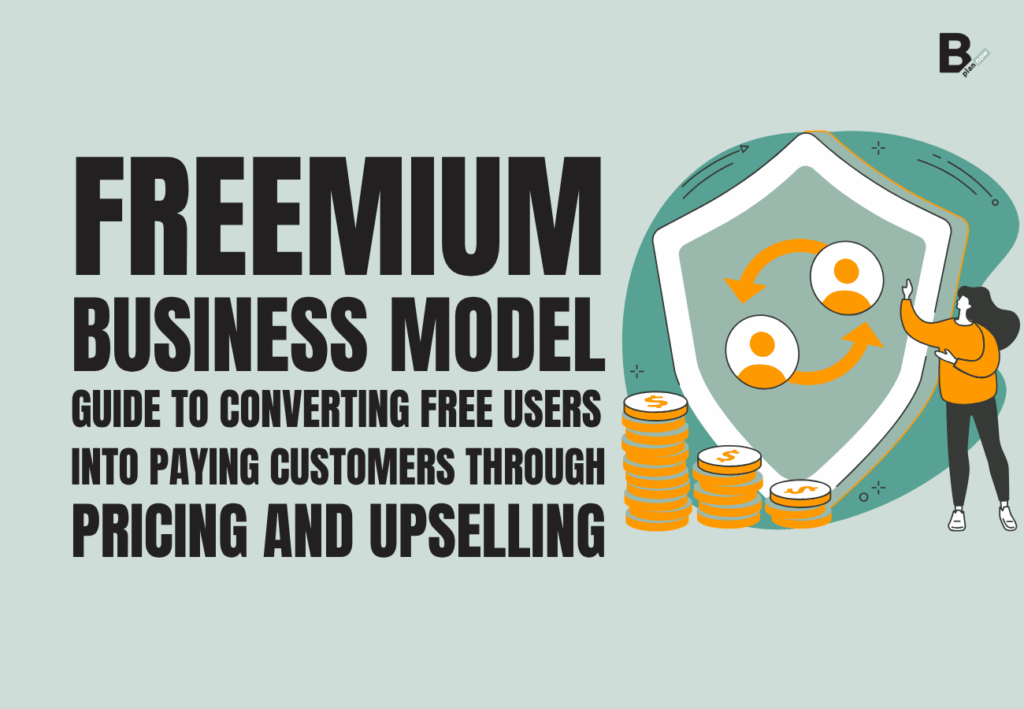The Freemium model, which sits halfway between “Free” and “Premium,” is a particular business strategy that has revolutionized the way companies attract users, build loyalty, and drive them to complete purchases. To achieve this goal, the model relies on targeted offers and articulated pricing models.
If you’re thinking about adopting this strategy too, you should continue reading the following lines: you’ll find a detailed explanation of what a Freemium model is (and how it differs from a free trial), the reasons why it’s popular (and in which fields), the advantages it offers to businesses (and users), the risks and the best strategies to put into practice to successfully tackle this challenge. You’ll also find a list of examples of winning Freemium models and many other tips for choosing the best path for your company or startup.
What is the Freemium model: meaning and differences with the free trial
The business model Freemium involves offering users the basic version of a service, software, or app for free and charging a fee in exchange for the ability to access advanced features or to benefit from a better user experience or results.
This approach leverages the human tendency to be more willing to try something new without being forced to spend money to do so. Users who use a service/software/app in Freemium mode have the opportunity to interact with it and experience its real value before committing financially.
Why it’s popular among startups and SaaS
The Freemium model is certainly not a new business model, but it has gained great popularity in recent years, ever since startups, companies adopting the SaaS business model, and apps started adopting it en masse.
These businesses are enticed by the possibility of creating brand awareness without the need to provide customer support or to sustain high costs for acquiring new customers. The entry threshold for the customer is particularly low, as are consequently also the costs for companies related to marketing activities.
Another important benefit for these types of businesses is the possibility of accessing a large amount of data on user behavior, preferences, and willingness to pay in a relatively easy and economical way, all data that can prove useful and valuable for the development of the service/product itself.
Advantages and limits of the freemium business model
In the previous lines we mentioned only some of the advantages that the Freemium business model can offer to companies (and users). Let’s discover them all.
Advantages for companies and users
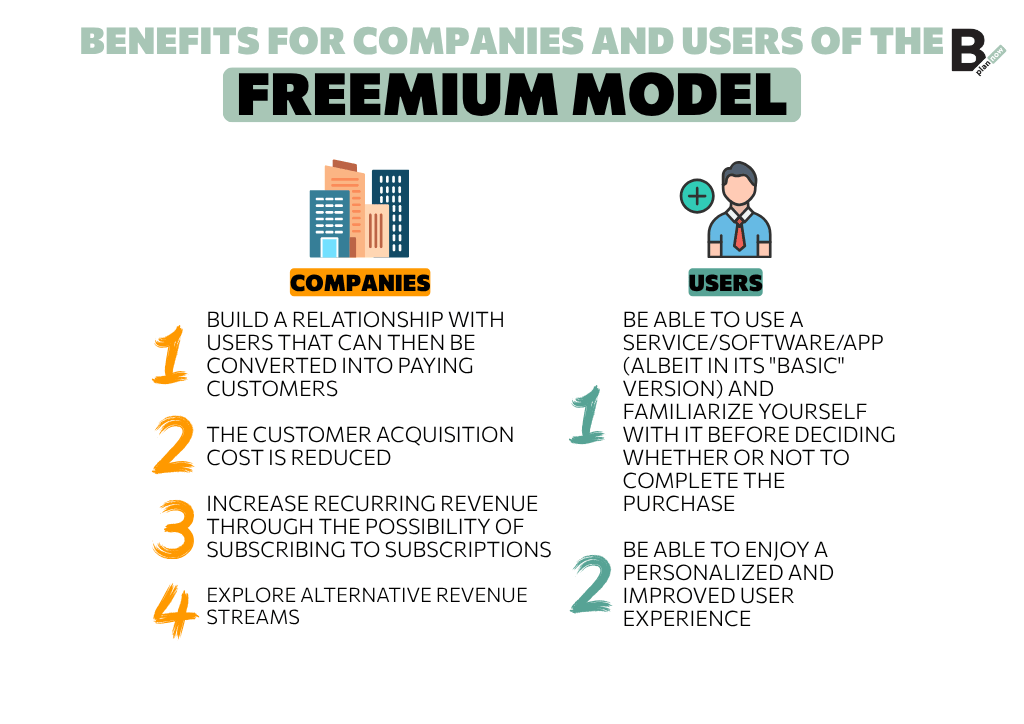
For companies, one of the first advantages of the Freemium model that comes to mind is being able to build a relationship with users that is useful for transforming them into paying customers.
The data and information that can be collected during the free use period of the service/software/app can be used to perfect the service/software/app itself, but also to create more personalized and effective marketing campaigns.
The customer acquisition cost is reduced as well as expenses for customer support and marketing activities.
The Freemium model also makes possible an increase in recurring revenue through the possibility of subscribing to subscriptions. But that’s not all: in addition to subscription fees to access premium features, companies adopting the Freemium model can explore alternative revenue streams such as selling user data and advertising.
As for users, instead, the main advantage is related to the fact of being able to use a service/software/app (albeit in its “basic” version) and to familiarize themselves with it before deciding whether to complete the purchase or not. During this time period, they have the opportunity to fully evaluate its features, thereby reducing the risk of spending money on something that might prove unsatisfactory.
Another benefit for users consists in the possibility of enjoying a personalized and better user experience, as it’s based on personal data collected by companies.
Risks and possible disadvantages to consider

The main risk related to the adoption of a Freemium model is the impact on sales that this particular business model could have: there is, in fact, the possibility that a user decides to give up completing the purchase to access premium features by “settling” for what the service/software/app offers in its free basic version.
Keep in mind, in this regard, the words of Josh Pigford:
“The goal of the Freemium model is not to give less for free, but to give enough to make the transition to paid irresistible.”
The risk, in this sense, is twofold: you must avoid offering too many features for free, because this way no one would be encouraged to upgrade to the premium version, but you also must not offer too little in the free version, because users might look elsewhere for a more satisfying solution for them.
Effective examples of the Freemium model
As promised at the opening of this guide, below you’ll find some effective examples of the Freemium model.
Spotify, Trello, Mailchimp, mobile games
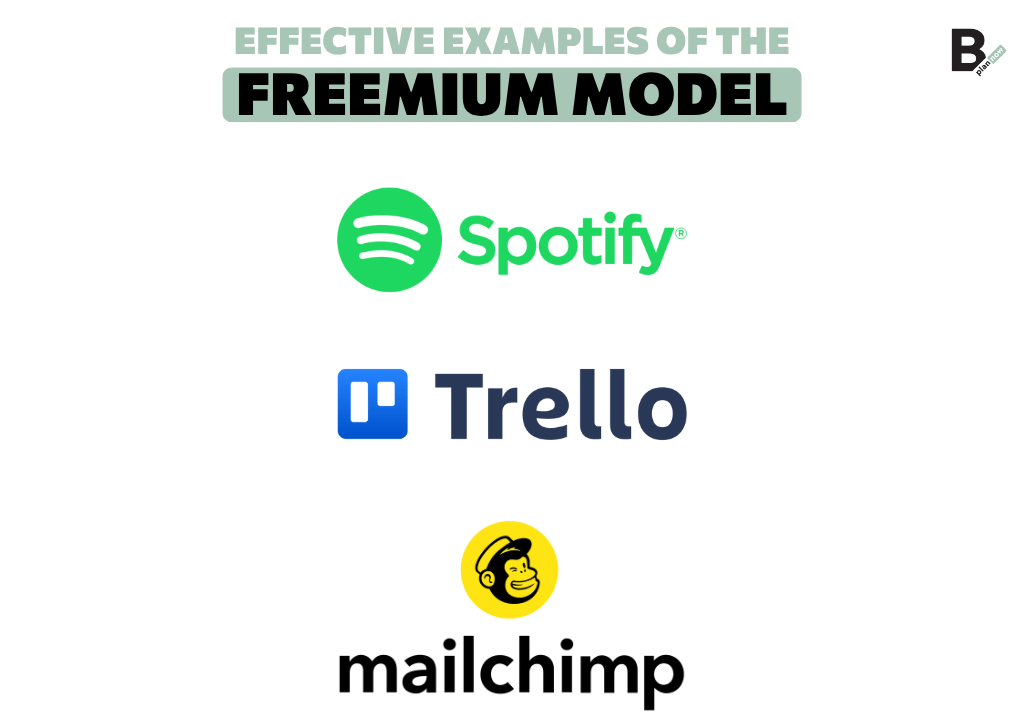
The most famous example of the Freemium model is perhaps Spotify, the streaming app where you can listen to music and podcasts. The free version allows users to access the entire music catalog but with some limitations, such as advertising interruptions, mandatory random playback, and the inability to download music to listen to offline.
The Premium subscription (paid), on the other hand, is ad-free, allows you to freely choose which songs to play and in what order, allows downloading for offline listening, and other additional features.
Trello, the online tool for managing tasks and projects, also works in Freemium mode: among the advantages that the paid version offers compared to the basic and free one is the ability to integrate Trello with other applications.
Mailchimp has decided to adopt the Freemium business model by offering its users different plans between free (Free) and paid (Essentials, Standard, and Premium) that have different features and limits. In the free plan there is a limit set at 500 contacts and 1000 emails per month, while paid plans offer more features, more contacts, and privileged customer support.
The Freemium model is also very common among mobile games: many of them, in fact, feature lots of advertising in the free version, which can be eliminated by upgrading to the paid version.
When Freemium creates real value (and when it doesn’t)
The success of this model lies in finding the balance between a free offering with enough value to attract users and premium features that convince users to upgrade to the paid version.
If you offer too many features in the free version, as already emphasized, no one will pay for the premium mode. Similarly, if you offer a too sparse basic version, no one will be so enticed to try the product/service to the point of upgrading.
The examples just mentioned indicate that there is no single “good” way for everyone: it’s necessary to understand what drives users to become paying customers and design offers (both free and paid ones) tailored to them.
Strategies to increase conversions from Freemium to paid
As you can probably imagine, there are precise strategies to increase conversions from Freemium to Paid. The main ones are three.
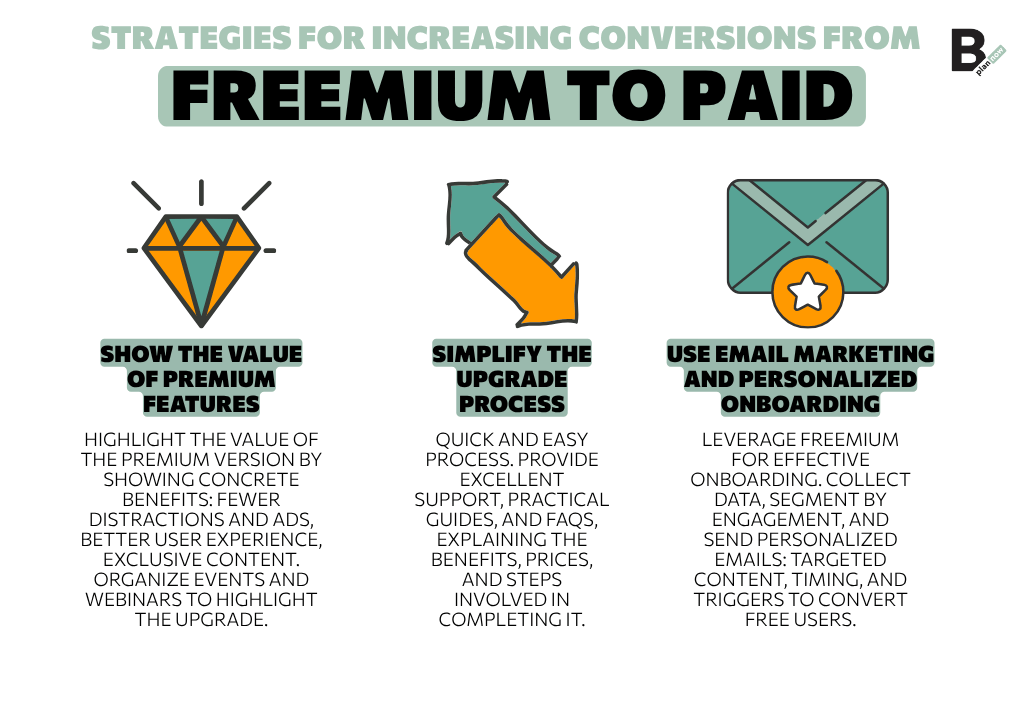
Showing the value of premium features
To push users to upgrade from the basic version to the paid one, you must first of all show the added value they have the opportunity to acquire. In concrete terms, you must highlight the benefits for users, such as, for example, the elimination of some distractions (like advertisements) or other improvements in terms of user experience. Another possible path is one that leads to offering exclusive content for paying customers.
Several companies adopting the Freemium model organize events or webinars designed precisely to show all the advantages of paid subscriptions.
Simplifying the upgrade process
Encouraging users to become paying customers also means simplifying the upgrade process. While it’s true that some users will never take the big step of subscribing for the premium version, it’s possible that others decide not to do it because it’s too “complicated.” The imperative, therefore, is to provide excellent customer service and provide users with all the useful information about the benefits of the upgrade but also on how to do it on a practical level.
Using email marketing and personalized onboarding
The Freemium business model improves customer onboarding by giving users the opportunity to try the service/software/app for free. Companies, for their part, can collect a large amount of information and data about users, useful for segmenting the user base based on engagement level and understanding how to do email marketing more effectively through personalized content useful for more easily transforming free users into paying customers.
Freemium vs. free trial: what to choose?
Often people tend to confuse the Freemium business model with the free trial. Well, it’s time to clarify, so that you can then understand which is better for your startup.
Although these are similar models, there is a substantial difference to consider and it concerns the type and duration of access to the product/service.
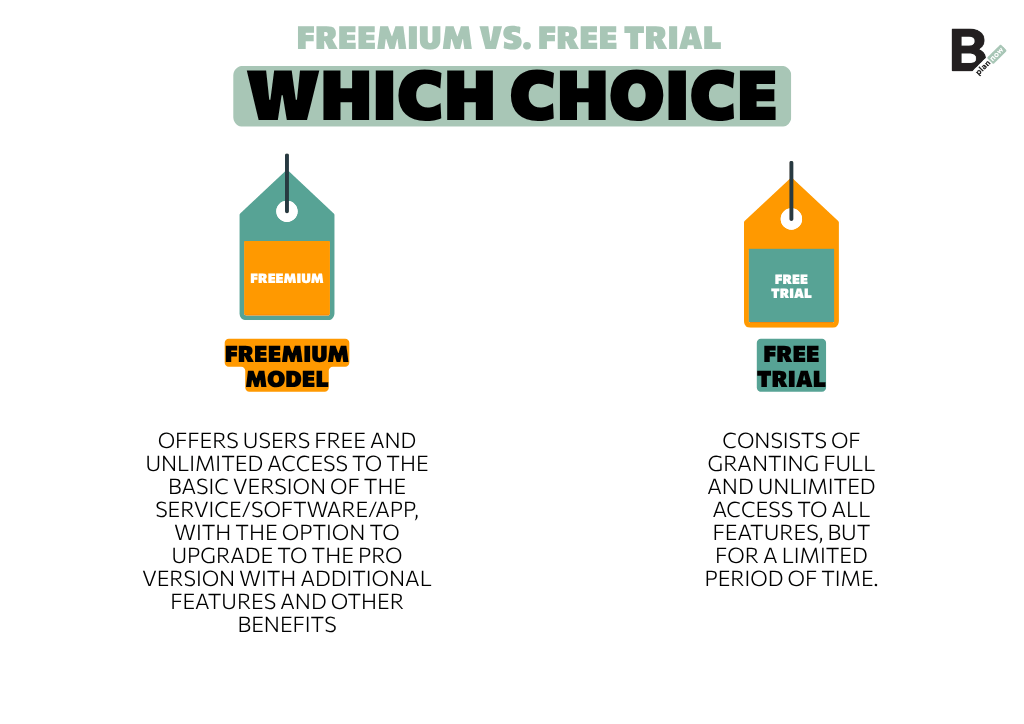
More precisely, the Freemium business model offers the user free and unlimited access to the basic version of the service/software/app, with the possibility of upgrading to access the pro version with additional features and other benefits. The free trial, instead, consists of granting complete and unlimited access to all features, but for a time period that is limited.
There are different types of trials that can be offered to users. Get comfortable because you’re about to learn about them.
Opt-in, opt-out, and pure freemium models compared
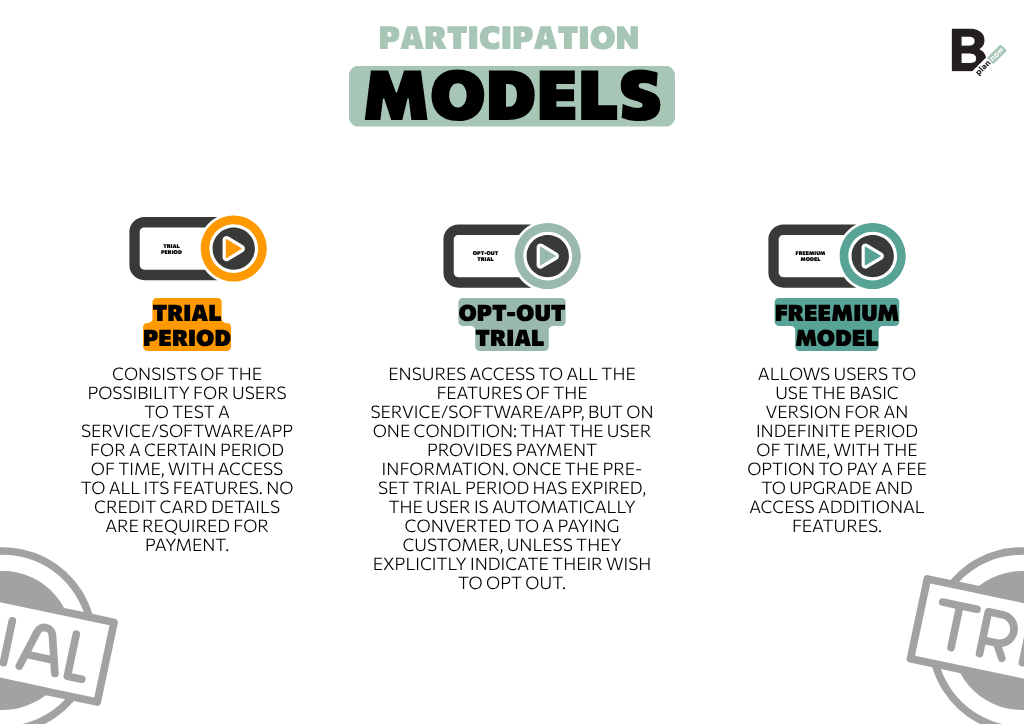
The so-called opt-in trial consists of the possibility for users to test a service/software/app for a certain period of time, having access to all its features. It is not required to provide credit card data for payment.
The opt-out trial model ensures access to all the features of the service/software/app, but on one condition: that the user provides payment information. Once the pre-established period for the trial has elapsed, the user is automatically converted into a paying customer, unless they explicitly signal their intention to opt out.
The Freemium mode, as already widely emphasized, allows the user to use the basic version for an undefined period of time, with the possibility of paying a fee to upgrade and access additional features.
When it’s convenient to combine both models
Both the Freemium model and the free trial aim to lower acquisition costs and create a simpler path for converting users into paying customers. What changes, substantially, is the way these two models intend to achieve this dual objective.
In some cases it’s possible to combine the two solutions: for example, you could offer a forever free trial of a version with basic features, pairing it with a paid premium version. Another option is to offer users the possibility of signing up for a free trial so as to understand whether it’s worth launching the paid version on the market.
How to optimize the conversion rate
We have three more very useful tips for you. They concern a very important aspect, namely, how to optimize the conversion rate.
Personalization and segmentation of offers
The first useful strategy is to focus on personalized and relevant offers for users. Today more than yesterday, in fact, consumers expect companies to present them with offers that are relevant to their personal experiences.
To succeed in this intent, you could, for example, use surveys to learn from the users themselves what they expect from your product or service.
During the use period of the service/software/app, collect data relating to users so as to personalize their onboarding even more effectively and better communicate the premium features that might interest them most. Remember that you can segment the customer base both from a demographic and behavioral point of view.
The importance of social proof
Social proof is a decisive factor that you must necessarily take into consideration if you want to optimize the conversion rate. People, in general, tend to be influenced by the actions of others. In our field this means that, if a user sees that many others have upgraded to the premium version (and were satisfied with it), it’s more likely that they too will consider the hypothesis of doing it.
For this reason, you could do like Dropbox, which prominently signals how many people have already upgraded, so that they serve as an example for others. Not only that: you can collect and share the experiences of your customers satisfied with the service you offer.
Measure, test, and adapt your strategy
The third and final tip for optimizing the conversion rate is always the “usual” one: to make strategies truly effective, it’s necessary to monitor them, measure them, and test them, so as to understand whether or not they are concretely capable of bringing significant results. Otherwise, it’s necessary to intervene to adapt them or set them aside to make room for new strategies.
Which strategy to choose for your startup?
Now that this guide dedicated to the Freemium model is about to end, you’ve probably asked yourself: okay, all very nice, but which strategy do I choose now for my startup? To find the answer to this question, follow the next indications.
Adapt the model to your audience and your goals
The best way to choose the most suitable model for your startup is to observe the characteristics and size of your audience and to keep in mind what your goals are. Whatever the model you choose, remember that what will make the difference will be the way you manage to effectively communicate what you offer to users and the advantages you are able to guarantee them.
Do you want to read all the articles related to the stage your startup is in?

